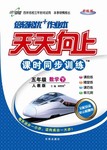题目内容
Walking alone on a remote beach in southwest Florida, I was surprised to hear splashes coming from the water. As I walked in the _______ of the sounds, I saw a manatee(海牛) show its head out of the water, _______a great snuffling(带鼻音的) breath. It seemed that it was in _______and trying to get out of it.
I'd never seen a _______ like this before. I wanted to _______, but there was no one else on the beach. So I went into the shallow water and went toward the animal. I came _______enough to make out the manatee. Then, a second manatee, much smaller, appeared beside it. _______, the manatees were also moving toward me. Soon I was _______by several manatees. I could clearly see the larger manatee _______the little one up with her flipper(鳍状肢) and pushed it to the ________beside me.
As the two slipped underwater, two other manatees moved up from behind, one on either side, ________gently against my body as they swam past. They circled and________ the action, this time ________by the mother and her baby. I held my hand out touching their back as they passed me. Since they obviously enjoyed touching me, I began ________each of them as they swam by.
I stood there enjoying the scene, ________to move, until finally the rising tide forced me back to the shore. Later I knew exactly what took place that morning. The manatees ________me in their celebration of a birth and I was welcome to meet the ________member of their family.
During that unexpected scene, I felt more involved in the rhythms of ________on our earth than ever. Each year, I head for that ________for a quiet little birthday picnic on the shore. After all, you never know who might ________up for your party.
1.A. direction B. condition C. middle D. side
2.A. making out B. putting out C. coming out D. letting out
3.A. force B. trouble C. loss D. action
4.A. look B. feel C. sight D. smell
5.A. leave B. see C. find D. help
6.A. close B. soon C. quick D. straight
7.A. Luckily B. Personally C. Unexpectedly D. Sadly
8.A. watched B. surrounded C. attacked D. separated
9.A. turn B. eat C. throw D. hold
10.A. field B. surface C. pool D. bank
11.A. rubbing B. preventing C. surfing D. comforting
12.A. practiced B. changed C. repeated D. showed
13.A. seen B. followed C. taught D. ordered
14.A. moving B. hitting C. catching D. touching
15.A. unwilling B. ready C. unable D. afraid
16.A. invited B. protected C. included D. fought
17.A. best B. oldest C. toughest D. newest
18.A. life B. music C. world D. development
19.A. boat B. hill C. beach D. scene
20.A. build B. show C. look D. step
 赢在课堂名师课时计划系列答案
赢在课堂名师课时计划系列答案 天天向上课时同步训练系列答案
天天向上课时同步训练系列答案
